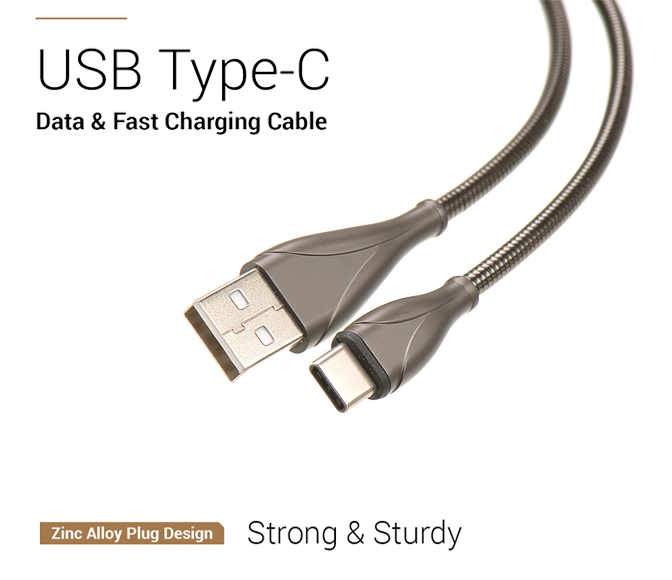Apple's insistence on certain details is well known. The bangs design that appeared from the iPhone X until the iPhone 12 series is still retained; if it were not for the iPhone 12 series to re-adopt the iPhone 4 era’s Founder design, Apple’s aesthetic fatigue to users would be even more serious. There is no way to solve the problem of face value when "changing the shell".
Another point that has been criticized by users is that Apple does not seem to have the intention of converting the existing iPhone's lighting interface to a Type-C interface. In fact, before the release of new iPhone products every year, the most concerned by the industry and consumers are just a few points: Does the screen have a high refresh rate? Does it support fast charging? Has the battery capacity increased? As the Android camp models gradually move closer to the Type-C interface, more and more consumers are beginning to turn their attention to the iPhone-when will you change the interface?
However, Apple's attitude towards consumers' pain points and needs has always been fascinating. In terms of whether to replace the interface, it is obvious that Apple has its own consideration.
In 2012, Apple officially released the lighting interface, and it was equipped on the iPhone 5 that year. This also allowed users to experience the thrill of plugging and unplugging the power cord for the first time. Since then, the lighting interface has become the standard configuration of iPhone models, and Android models that support the Type-C interface only began to appear in 2014, two years later, and the following year, in 2015, it began to be popularized. Judging from the actual user experience and physical characteristics, today's lighting has completely fallen behind Type-C.

The Type-C interface supports the highest current of 3A and the maximum power of 100W, while the lighting interface currently has a maximum of 20W, and the charging speed is simply not the same; on the other hand, Type-C has mostly supported 10Gbit/s USB 3.1 . The transmission rate of the lightning interface is still at the 5Gbit/s USB2.0 a few years ago, which is really not enough. Oh, by the way, although Apple has done a lot in wireless earphones, there were complaints during the period when the 3.5mm earphone jack was just cancelled. After all, lightning does not support the audio output of analog signals. If you want to use wired earphones, you need a whole adapter. Even though there are a lot of voices talking about port switching, Apple seems to have been very determined.
For Apple, maintaining an ecological closed loop is a necessary operation, and using its own interface is naturally reasonable. But this explanation is not comprehensive, because Apple is not a device that does not use Type-C unbutton, iPad Pro, MacBook Pro, MacBook Air and iPad Air, many Apple eco-products have embraced the Type-C interface, why is the iPhone not using it?
Apple is reluctant to use Type-C because it is a free and open standard. At the same time, consideration of the waterproof specifications of iPhone devices is also an important reason why Apple refuses to change to Type-C. The waterproof performance and safety of Type-C interface are indeed lower than lightning and MagSafe wireless charging technology.
It is true that Type-C is flexible and open, which is also a double-edged sword. Once it encounters a hacker's attack, it will have a very wide range of influence, which is obviously unacceptable to Apple. In addition, if the iPhone is converted to a Type-C interface this year, it will cause redundant accessories for a large number of devices such as entry-level iPad, iPad mini, AirPods, etc. These accessories will not be widely used on any flagship products. Therefore, switching the interface on the iPhone to USB-C is likely to affect more Apple products. This possibility will be firmer. It is better to force Apple to speed up the process of all series of interfaceless devices. But one thing needs to be clear. Apple’s current MagSafe is not perfect, and there will be some or other problems in the specific use process.
I think interfaceless devices are the future trend, but it is too early to see it, and it is not a wise choice to rush to implement interfaceless devices. Maintaining the status quo is sometimes more effective than radical reforms. There is also a very important point. Apple can strictly monitor the quality of lightning cables and accessories through its MFi program. The full name of MFi certification is "Made for iPhone/iPad", which is a kind of logo usage license for external accessories produced by Apple's authorized accessory manufacturers. With MFi, Apple has earned a considerable income, because third-party manufacturers must pay a considerable commission to Apple in order to manufacture lightning cables or accessories, and these products also have to pass strict certification. There is no reason not making money when you can make money.
On the whole, Apple chooses to continue to maintain the lighting interface's revenue far higher than the conversion to Type-C interface, and Apple's ecosystem is already very complete, there will be no problems when using the lighting interface internally, and most of the main inconveniences come from foreign. As far as the company’s future plans are concerned, the iPhone series will still coexist with the lighting interface for a period of time, and Apple has shown its ambition to skip Type-C and enter the no-interface era.
However, it still takes a few years for now. As for the future, let us wait and see.

















View More(Total0)Comment Lists